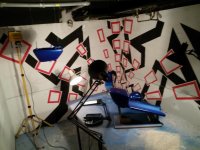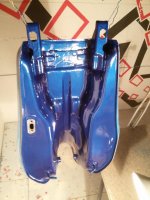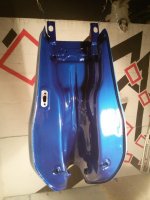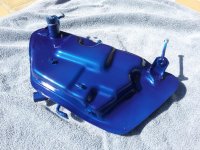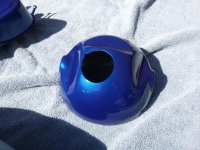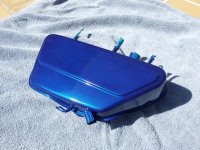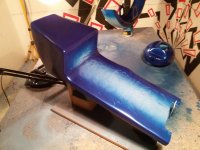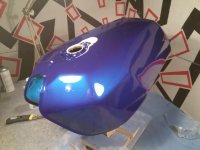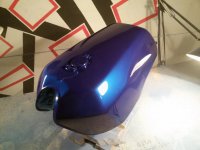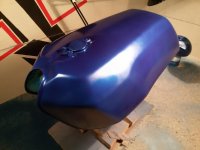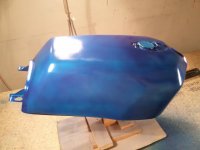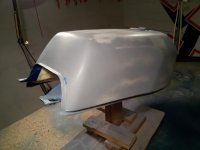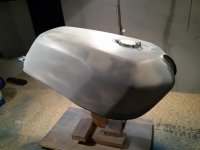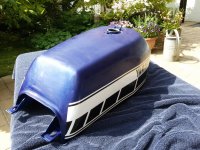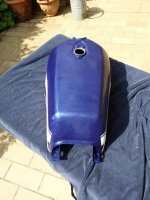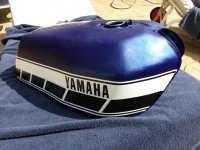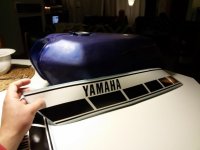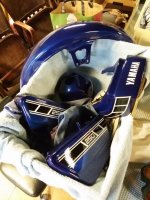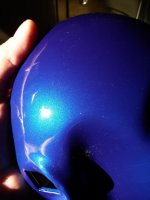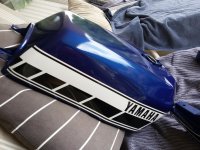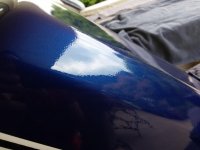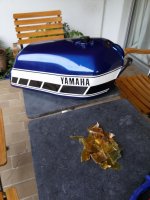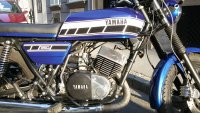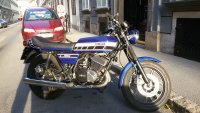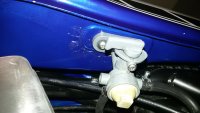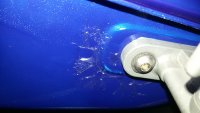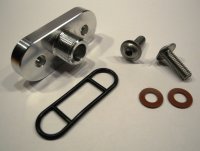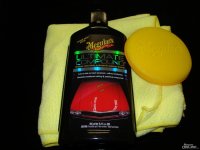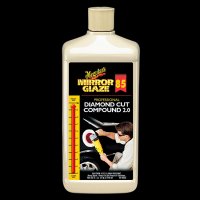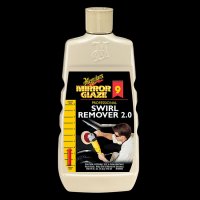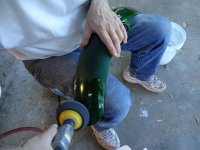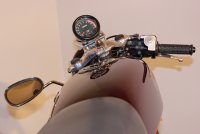next step was sanding sanding and again sanding....important not to sand trough the epoxy.the epoxy paint was so super nice to sand smooth, no comparison to normal 1 K rattle can primer.i used a marker to mark the areas which still needed some more sanding, i used a lamp to find them holding it against the light.
then the first layer of paint came on the parts,this was the biggest batch and man this was a LOT to spray,maybe next time i would split up the batch since one can concentrate more on one part.
the color laid on like "baby" blue and with every layer it added strength and deepness.
the tank was always treated separately which was a good idea,since it needed extra care,being a big eye catcher,first i sprayed the underside of it hanging.
first i laid on 2-3coats of color
then i laid on the 1K clearcoat as a protection coat the scuff it before putting on the decals.
then the first layer of paint came on the parts,this was the biggest batch and man this was a LOT to spray,maybe next time i would split up the batch since one can concentrate more on one part.
the color laid on like "baby" blue and with every layer it added strength and deepness.
the tank was always treated separately which was a good idea,since it needed extra care,being a big eye catcher,first i sprayed the underside of it hanging.
first i laid on 2-3coats of color
then i laid on the 1K clearcoat as a protection coat the scuff it before putting on the decals.


